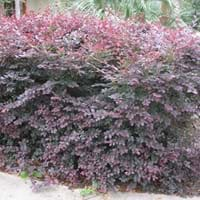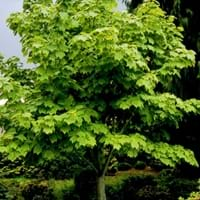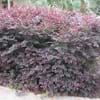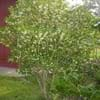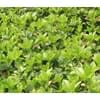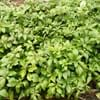Life Span
Perennial
Perennial
Type
Broadleaf Evergreen
Tree
Origin
China, Japan
Northeastern United States, Mid-Atlantic United States, Southeastern United States, Canada
Types
Little Rose Dawn, Hines Purpleleaf, ‘Shang-hi
Not Available
Habitat
gardens, Hillside, open Woodlands, Roadsides, Rocky areas, Stream side, Woodlands
moist forests, Slopes
USDA Hardiness Zone
6-9
3-7
AHS Heat Zone
Not Available
7-1
Sunset Zone
21,22
Not Available
Habit
Oval or Rounded
Upright/Erect
Flower Color
White
Yellow, Yellow green
Flower Color Modifier
Bicolor
Bicolor
Fruit Color
Brown
Green, Brown
Leaf Color in Spring
Green, Bronze
Light Green
Leaf Color in Summer
Green
Green
Leaf Color in Fall
Green
Yellow
Leaf Color in Winter
Green
Not Available
Leaf Shape
Ovate
Maple shaped
Plant Season
Spring, Summer, Fall, Winter
Not Available
Sunlight
Full Sun, Partial Sun, Partial shade
Partial Sun, Partial shade
The pH of Soil
Acidic, Neutral
Acidic, Neutral
Soil Drainage
Average
Well drained
Bloom Time
Early Spring, Late Winter
Early Spring, Spring
Tolerances
Drought
Not Available
Where to Plant?
Container, Ground
Ground
How to Plant?
Seedlings, Transplanting
Layering, Seedlings, Stem Cutting
Plant Maintenance
Low
Medium
Watering Requirements
Do Not over Water
Requires regular watering
In Summer
Lots of watering
Lots of watering
In Spring
Consistently
Moderate
In Winter
Ample Water
Average Water
Soil pH
Acidic, Neutral
Acidic, Neutral
Soil Drainage Capacity
Average
Well drained
Sun Exposure
Full Sun, Partial Sun, Partial shade
Partial Sun, Partial shade
Pruning
Prune to control growth
Prune if you want to improve plant shape
Fertilizers
All-Purpose Liquid Fertilizer, Fertilize three times a year
All-Purpose Liquid Fertilizer
Pests and Diseases
Bacterial Gall
Anthracnose, Bacterial leaf scorch, Bleeding canker, Decline, Fomes root rot, Ganoderma root rot, Laetiporus root rot, Leaf spot, Powdery mildew, Red blotch, Tar spot, Verticillium Wilt
Plant Tolerance
Drought
Drought
Flowers
Showy
Insignificant
Flower Petal Number
Single
Single
Foliage Texture
Medium
Coarse
Foliage Sheen
Matte
Matte
Attracts
Not Available
Not Available
Allergy
Not Available
Asthma, Runny nose, Skin irritation
Aesthetic Uses
Showy Purposes
Showy Purposes
Beauty Benefits
Not Available
Not Available
Environmental Uses
Not Available
Air purification
Medicinal Uses
No Medicinal Use
Antirheumatic, Cold, Cough, Emetic, gonorrhoea, Kidney problems, Pectoral, Swelling, Vomiting
Part of Plant Used
Whole plant
Leaves, Sap
Other Uses
Used as Ornamental plant
Used as Ornamental plant, Used as preservative
Used As Indoor Plant
No
No
Used As Outdoor Plant
Yes
Yes
Garden Design
Container, Feature Plant, Foundation, Hedges, Mixed Border, Screening, Wind Break
Feature Plant
Botanical Name
LOROPETALUM chinense
ACER pensylvanicum
Common Name
Loropetalum, Chinese fringe flower
Moosewood, striped maple, moose maple
In Hindi
Loropetalum
धारीदार मेपल
In German
Loropetalum
gestreifte Ahorn
In French
Loropetalum
érable rayé
In Spanish
Loropetalum
arce rayado
In Greek
Loropetalum
ριγέ σφενδάμου
In Portuguese
Loropetalum
plátano listrada
In Polish
Loropetalum
paski klonu
In Latin
Loropetalum
alba acernis
Phylum
Spermatophyta
Magnoliophyta
Class
Dicotyledonae
Magnoliopsida
Order
Saxifragales
Sapindales
Family
Hamamelidaceae
Aceraceae
Clade
Angiosperms, Core eudicots, Eudicots
Angiosperms, Eudicots, Rosids
Tribe
Not Available
Not Available
Subfamily
Not Available
Not Available
Number of Species
Not Available
Not Available
Difference Between Loropetalum Chinese and Moosewood Tree
If you are confused whether Loropetalum Chinese or Moosewood Tree are same, here are some features about those plants to help you choose better. Many people think that these two plants have the same characteristics, but one can see Loropetalum Chinese and Moosewood Tree Information and learn more about it. Fertilizers required for proper growth of Loropetalum Chinese are All-Purpose Liquid Fertilizer and Fertilize three times a year, whereas for Moosewood Tree fertilizers required are All-Purpose Liquid Fertilizer. Hence, one should know the basic difference between Loropetalum Chinese and Moosewood Tree if you are planning to have them in your garden to enhance its beauty.
<
Flowering PlantsImportance of Loropetalum Chinese and Moosewood Tree
Want to have the most appropriate plant for your garden? You might want to know the importance of Loropetalum Chinese and Moosewood Tree. Basically, these two plants vary in many aspects. Compare Loropetalum Chinese and Moosewood Tree as they differ in many characteristics such as their life, care, benefits, facts, etc. Every gardener must at least have the slightest clue about the plants he wants to plant in his garden. Compare their benefits, which differ in many ways like facts and uses. The medicinal use of Loropetalum Chinese is No Medicinal Use whereas of Moosewood Tree is Antirheumatic, Cold, Cough, Emetic, gonorrhoea, Kidney problems, Pectoral, Swelling and Vomiting. Loropetalum Chinese has beauty benefits as follows: Not Available while Moosewood Tree has beauty benefits as follows: Not Available.
Compare Facts of Loropetalum Chinese vs Moosewood Tree
How to choose the best garden plant for your garden depending upon its facts? Here garden plant comparison will help you to solve this query. Compare the facts of Loropetalum Chinese vs Moosewood Tree and know which one to choose. As garden plants have benefits and other uses, allergy is also a major drawback of plants for some people. Allergic reactions of Loropetalum Chinese are Not Available whereas of Moosewood Tree have Asthma, Runny nose and Skin irritation respectively. Having a fruit bearing plant in your garden can be a plus point of your garden. Loropetalum Chinese has no showy fruits and Moosewood Tree has no showy fruits. Also Loropetalum Chinese is not flowering and Moosewood Tree is not flowering . You can compare Loropetalum Chinese and Moosewood Tree facts and facts of other plants too.
